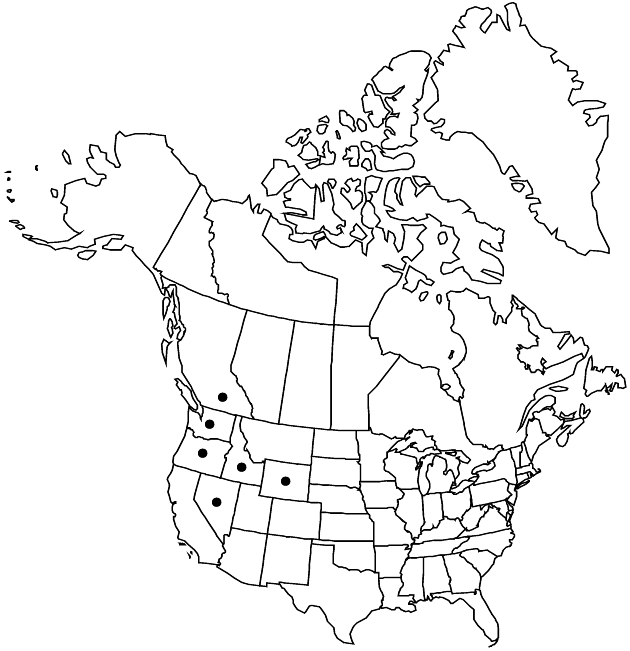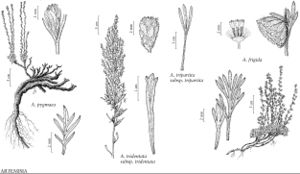Difference between revisions of "Artemisia tripartita subsp. tripartita"
FNA>Volume Importer |
FNA>Volume Importer |
||
| Line 19: | Line 19: | ||
|elevation=900–1900 m | |elevation=900–1900 m | ||
|distribution=B.C.;Idaho;Nev.;Oreg.;Wash.;Wyo. | |distribution=B.C.;Idaho;Nev.;Oreg.;Wash.;Wyo. | ||
| − | |discussion=<p>Subspecies tripartita ranges throughout the Snake River and Columbia River basins, extending north through central British Columbia, where average annual precipitation is 375–800 mm. Because much of the range includes fertile agricultural land, much of the habitat has been lost to farming, and populations of subsp. tripartita occur as isolated islands along drainages and at the bases of mountain slopes. It may be one of the parents involved in the presumed hybrid origin of Artemisia arbuscula subsp. thermopola.</p> | + | |discussion=<p>Subspecies tripartita ranges throughout the Snake River and Columbia River basins, extending north through central British Columbia, where average annual precipitation is 375–800 mm. Because much of the range includes fertile agricultural land, much of the habitat has been lost to farming, and populations of <i></i>subsp.<i> tripartita</i> occur as isolated islands along drainages and at the bases of mountain slopes. It may be one of the parents involved in the presumed hybrid origin of <i>Artemisia arbuscula </i>subsp.<i> thermopola</i>.</p> |
|tables= | |tables= | ||
|references= | |references= | ||
| Line 43: | Line 43: | ||
|publication year= | |publication year= | ||
|special status= | |special status= | ||
| − | |source xml=https://jpend@bitbucket.org/aafc-mbb/fna-data-curation.git/src/ | + | |source xml=https://jpend@bitbucket.org/aafc-mbb/fna-data-curation.git/src/8f726806613d60c220dc4493de13607dd3150896/coarse_grained_fna_xml/V19-20-21/V19_882.xml |
|tribe=Asteraceae tribe Anthemideae | |tribe=Asteraceae tribe Anthemideae | ||
|genus=Artemisia | |genus=Artemisia | ||
Revision as of 16:15, 18 September 2019
Shrubs, 20–150(–200) cm. Leaves 1.5–4 × 0.5–1.5 cm, lobes linear, to 0.5 mm wide. Heads in spiciform arrays (6–)8–15(–35) × (1–)4–5 cm. Involucres 2–3 × 2 mm. Florets 4–8. Cypselae 1.8–2.3 mm. 2n = 18, 36.
Phenology: Flowering mid summer–late fall.
Habitat: Deep loam soils, usually igneous in origin
Elevation: 900–1900 m
Distribution

B.C., Idaho, Nev., Oreg., Wash., Wyo.
Discussion
Subspecies tripartita ranges throughout the Snake River and Columbia River basins, extending north through central British Columbia, where average annual precipitation is 375–800 mm. Because much of the range includes fertile agricultural land, much of the habitat has been lost to farming, and populations of subsp. tripartita occur as isolated islands along drainages and at the bases of mountain slopes. It may be one of the parents involved in the presumed hybrid origin of Artemisia arbuscula subsp. thermopola.
Selected References
None.
